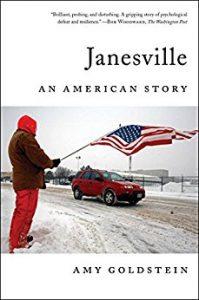Posted by Meredith on Tuesday, Jul 25, 2017
 It used to be when you asked the people of Janesville, Wisc., to describe their town -- and, by default, themselves -- in one word, that word would be perseverance. Or maybe diligence. Determined. Tenacious.
It used to be when you asked the people of Janesville, Wisc., to describe their town -- and, by default, themselves -- in one word, that word would be perseverance. Or maybe diligence. Determined. Tenacious.
You can scour a thesaurus for the right word, but it boils down to this: when the people of Janesville get knocked down, they rise again -- better and stronger. The city history is filled with examples of how the industrial town reinvented itself to roll with the punches. Even when the nation's oldest operating General Motors plant -- the backbone of the town's identity and economy -- closed two days before Christmas in 2008, many believed it was temporary. The plant had closed its doors before only to reopen with a new product, a new purpose. It would again.
Only it didn't.
The plant's closing was news. It translated into national headlines. But then Janesville fell off the public's radar. It wasn't the only town impacted by The Great Recession. However, reporter Amy Goldstein stayed behind to see what happened to a town without its identity, to people who not only lost their jobs, but their sense of self. The result? Janesville: An American Story.
(Note: This is Paul Ryan's hometown. He's in the story, but it's the real people of Janesville who show what happened best.)
The ripple effect of the plant's closing was felt by everyone. Teachers had students who were hungry and scared. Parents took jobs that made less money. The local community college saw historic enrollment numbers, but also adult students who didn't know how to use computers. In-home child care operations closed because parents were no longer going to work every morning -- another person out of a job. Middle class families slid into lower class and lower class families dropped below poverty level. Teenagers took jobs to support their families and families struggled to stay together. Politicians on both sides of the aisle claimed to be on the side of the American worker, but as the political divide deepened at the state and federal levels, Janesville residents shifted from being one community and turned on each other. Laid off GM workers resented those who retired with their pensions. The unemployed were angry at teachers protesting the governor's plan to slash union rights because at least they had a job. Community leaders who still believed Janesville could survive struggled to remain positive while food banks searched for ways to keep shelves full.
This was a powerful story. Kudos to Goldstein for painting such a vivid picture of what too many towns have experienced in our economic climate. Only time will tell if we learned anything from it.

